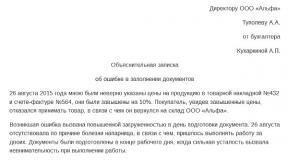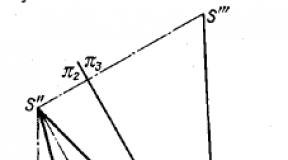The tear duct - its blockage and inflammation: how to treat dacryocystitis in adults. Treatment of dacryocystitis in adults: methods and drugs for the disease Treatment of dacryocystitis in newborns
Dacryocystitis called an inflammatory disease that affects the lacrimal sac of the eye and most often has chronic course.
Causes of dacryocystitis
The disease is caused by blockage or narrowing of the lacrimal canal, through which tear fluid is discharged into the nasal cavity. Can lead to disruption of the patency of this channel the following reasons:
- Inflammatory process in the nasal cavity and / or in the sinuses;
- Infectious and inflammatory eye diseases;
- Consequences of injuries of the facial part of the skull;
- Congenital pathology of the development of the lacrimal canal.
Insufficient patency of the lacrimal canal disrupts the outflow of lacrimal fluid, which creates optimal conditions for the development of pathogenic microflora in the lacrimal sac, which causes inflammation.
Symptoms of dacryocystitis
Dacryocystitis usually presents the following symptoms:
- Purulent discharge from the affected eye;
- Profuse lachrymation;
- Swelling of the lacrimal sac. If you press on it, then a liquid of a purulent or mucous nature will stand out from the lacrimal openings.
Complications of dacryocystitis
Dacryocystitis is not such a harmless disease as it might seem at first glance. If it is not treated in time, the infectious process can spread and lead to the development of phlegmon. The first signs of this complication are severe pain in the inner corner of the affected eye and a sharp swelling of the soft tissues surrounding it.
Dacryocystitis in newborns
In ophthalmology, inflammation of the lacrimal sac in newborns is usually distinguished as a special form of the disease. The main reason for its development is a violation of the correct process of intrauterine development of the structures of the eye.
Before the birth lacrimal canal the baby is filled with a special mass of a muco-gelatinous nature, and its exits are closed by a membrane membrane. By the time of delivery, the lacrimal canal is usually cleared of the masses filling it. The membrane membrane ruptures at the time of the first breath of the newborn. However, in a small proportion of children (from 1 to 7%), the rupture of the membrane does not occur and the lacrimal canal is clogged.
Dacryocystitis of newborns in the first month of their life is manifested by the appearance of a scanty purulent discharge in the conjunctival sac. Starting from 2-3 months, children have lacrimation and lacrimation.
Aggravation inflammatory process without providing timely medical care can lead to rapid development phlegmon of the lacrimal sac. The child in the area of the projection of the lacrimal sac has a pronounced edema, the body temperature rises. AT general analysis blood reveal an increase in the number of leukocytes (leukocytosis) and an increased ESR. The danger of phlegmon lies in the fact that it can open not only outside, but also inside. In the latter case, purulent masses penetrate the cranial cavity, which can lead to the development of potentially life-threatening diseases for the baby ( purulent meningitis, brain abscess, etc.).
Another danger of dacryocystitis in newborns is that the inflamed lacrimal sac is fraught with the threat of developing purulent corneal ulcers that can cause blindness in the child.
Dacryocystitis in adults
In adults, dacryocystitis is usually chronic and develops against the background of various ocular pathologies. This disease is quite widespread and affects women more often than men. Depending on the clinical manifestations adult dacryocystitis is subdivided into stenosing and simple catarrhal dacryocystitis, phlegmon and empyema of the lacrimal sac.
The causative agents of dacryocystitis in adults are various pathogenic microorganisms: viruses, fungi, bacteria. Traumatic injuries are often the provoking factor in the development of the disease. eyeball.
As a result of the inflammatory process, the mucous membrane of the nasolacrimal canal begins to thicken, which in turn leads to a decrease in its lumen up to complete obstruction. As a result, the outflow of tear fluid into the nasal cavity stops. It begins to stagnate in the lacrimal sac, and this creates optimal conditions for the development of pathogenic microflora in it.

At the initial stages of its development, dacryocystitis in adults usually does not manifest itself clinically. Then patients have a slight swelling over the lacrimal sac and a feeling of its fullness. After some time, these symptoms are joined by complaints of a constant feeling of discomfort, mild soreness, continuous lacrimation. When pressing on the lacrimal sac, a turbid liquid of a mucous or purulent nature is released from it. In the late stage of the disease, the skin around the inner corner of the eye becomes irritated and reddened due to constant tearing.
Treatment
Neonatal dacryocystitis is treated conservatively or surgically. The sooner the correct diagnosis is made and treatment of the disease begins, the better the prognosis will be. However, unfortunately, many parents confuse the symptoms of dacryocystitis with conjunctivitis and try to treat it on their own, thereby losing time.
Remember that only an ophthalmologist can make a correct diagnosis! Therefore, if you experience the symptoms described above, be sure to consult a doctor.
Treatment of dacryocystitis in newborns begins with the appointment of antibiotic therapy and washing the lacrimal ducts. In addition, the doctor performs a jerky massage (jerky movements go from top to bottom) of the lacrimal sac, which in many cases allows you to break through the membrane septum that closes the lacrimal canal. If the ongoing treatment does not lead to a complete recovery of the child, then he is prescribed bougienage (probing) of the nasolacrimal canal. The earlier it started conservative treatment, the higher the likelihood that the baby will not have to perform the bougienage procedure.
In adults, treatment of dacryocystitis also begins with the use of conservative methods. They consist in washing the lacrimal sac with solutions of drugs with anti-inflammatory, antibacterial and vasoconstrictive effects. In addition, a lacrimal sac massage is shown. If you wear contact lenses, then for the period of treatment of dacryocystitis they should be discarded and traditional glasses should be used to correct visual acuity.
In the absence of the effect of ongoing conservative therapy or when the patient consults a doctor in the advanced stages of the disease, surgical treatment is indicated. In adults with dacryocystitis, the following methods of surgical intervention are used:
- Bougienage(probing) and washing. During this procedure, the doctor carefully inserts a thin probe into the nasolacrimal canal and advances it along it, thereby restoring the patency of the canal.
- Dacryocystorhinostomy. The main purpose of this operation is to create a new communication between the lacrimal sac and the nasal cavity, thanks to which the lacrimal fluid can flow, bypassing the clogged natural lacrimal-nasal canal.
Team of doctors Points.No
Dacryocystitis belongs to the category of acute inflammatory ophthalmic diseases. The disease develops in the lacrimal canal. When a pathology is suspected, patients are assigned a comprehensive diagnosis, which makes it possible to develop the most effective treatment regimen.
General information about dacryocystitis
Chronic dacryocystitis in adults is a rare pathological process that is diagnosed in 5 percent of cases among all ophthalmic diseases. In the fairer sex, inflammation of the nasolacrimal cavity is observed much more often than in men. Most often, the disease is diagnosed in adulthood. The narrowing of the lacrimal cavity can lead to serious purulent septic complications.
The lacrimal glands secrete a secret, which is used to wash the eye. The contents enter the inner corner of the eyeball, which is characterized by the presence of lacrimal openings. With their help, the tears enter the lacrimal sac and the nasal cavity through the nasolacrimal canal. With dacryocystitis, obstruction of the lacrimal ducts is observed, which leads to a violation of the function of tear secretion. In this case, a large amount of tear fluid is collected in the bag. With the stagnation of tears and the development of an infectious process in the lacrimal sac, dacryocystitis is diagnosed.
The reasons
Obstruction of the lacrimal canals is observed against the background of exposure to various provoking factors. In most cases, the pathological process is diagnosed with inflammation, which is of bacterial or viral origin. Pathology develops with various diseases such as:
- recurrent rhinitis;
- respiratory infections;
- sinusitis.
The risk of developing a pathological process increases with fractures of the bones of the nose and orbit. If the integrity of the lacrimal cavity is damaged or violated, this leads to the development of the disease. Pathology is diagnosed in patients if dust, debris and other foreign bodies. With the formation of polyps in the nasal cavity, dacryocystitis often develops.
The disease develops in patients with impaired metabolism. Patients who suffer from diabetes. Obstruction of the lacrimal cavity is observed with violations in the work immune system. If a person constantly interacts with chemicals that negatively affect the organs of vision, then this leads to the development of pathology. Blockage of the lacrimal cavity is diagnosed with a variety of allergic reactions. Sudden fluctuations in temperature can cause a pathological process.

blockage tear ducts in adult patients, it is diagnosed for a variety of reasons that must be eliminated from your life without fail.
Symptoms
Inflammation of the lacrimal cavity is characterized by the occurrence of certain signs. If the disease proceeds in a recurrent form, then it is accompanied by swelling near the inner corner of the eye. When you press the bag, the appearance of soreness is observed. Pathology is accompanied by swelling of the eye, as well as swelling of the eyelids. During the course of the disease, a narrowing of the gap is observed visual organ which does not allow full vision. If the infectious process spreads, then this leads to the appearance of purulent ulcers.
The lacrimal canal turns red in pathology. Patients complain of the development of soreness around the orbit, which is aching in nature. In this case, patients sometimes feel acute pain. With untimely treatment of the disease in patients, the body temperature rises. Against the background of intoxication, the development of weakness, malaise and fatigue is observed, even when doing the usual things. Symptoms of pathology are manifested in the form of constant tearing and swelling of the eyelids with blood. If you press on the lacrimal canal, this will lead to an increase in secretions.
Attention! With lacrimal disease, patients have a large number of symptoms, which allows him to independently determine dacryocystitis. To confirm the diagnosis, you must consult a doctor.
Disease therapy
Treatment of dacryocystitis in adults can be carried out using a variety of methods, according to the form of pathology. It is directed to resume patency in the lacrimal canal. Also, patients are prescribed anti-inflammatory drugs.
Therapy acute form disease is carried out in a hospital setting. Patients need to take oral tetracycline or sulfadimezin. The use of tablets is recommended 4 times a day. With frequent recurrences of the pathology, the patient is prescribed bougienage. Cleaning consists in removing the contents from the lacrimal cavities with a special tool, which makes it possible to fully restore them.
When an abscess occurs, probing of the lacrimal cavity is performed, which consists in opening it through the epithelium. Before washing the canal, the patient is prescribed systemic vitamin therapy, as well as UHF therapy. After opening, the wound is drained. It is also treated with special solutions that have an antiseptic effect. In this case, it applies:
- Hydrogen peroxide;
- Dioxidine;
- Furacilin.
Washing the lacrimal cavity in adults should be carried out only by a specialist, which will eliminate the possibility of complications. Manipulation is recommended if the vessels are severely constricted.
To eliminate the possibility of developing an infectious process in the future, patients are recommended to instill antibacterial drops into the eyes. Treatment of dacryocystitis in an adult is the use of Gentamicin, Miramistin and Levomycetin. For the treatment of the disease, the use of ointments with an antibacterial effect is recommended - Tetracycline or Erythromycin ointment, Floxal. If the pathology is accompanied by acute inflammatory processes, then the patient is prescribed antibiotics.
Quite often, treatment with folk remedies is carried out. It consists in warming up, which ensures the separation of the tear fluid. In this case, warm tea bags are used, which must be applied to the eyes. And also recommended the use of compresses from the infusion of calendula.
Important! Only a doctor should treat the pathological process, which will positively affect the effectiveness of this procedure.
How to do massage
To ensure maximum effective therapy pathology is recommended. Before carrying out the manipulation, it is necessary to clean the organs of vision from pus using Furacillin. One tablet is taken this drug and dissolves in 200 milliliters of water. Washing is carried out from the outer corner to the inner.
The index finger is a tubercle near the inner corner. We place the fingertip on the bridge of the nose, and the lateral part on the tubercle. After that, light pressure is applied to the tubercle. In this place there is a film that closes the lumen of the channel. After that, pressure is applied to the bridge of the nose in a downward direction. Here the pressure weakens, but it is forbidden to tear them off the skin. The manipulation should be repeated 10 times. During the massage, there is a release of purulent fluid. It must be wiped with a solution of Furacillin.

Important! Massage can be carried out by the attending physician or independently. It helps speed up the healing process.
Prevention
If the disease proceeds without complications, then the prognosis is positive. In order to eliminate the possibility of the development of a pathological process, it is necessary to carry out its prevention in a timely manner. In this case, a person is advised to avoid injuries in the face area. If diseases of the ENT organs occur, then they must be treated in a timely and adequate manner.
With polyps in the nasal cavity, it is recommended to remove them surgically. When working with garbage or in woodworking enterprises, special safety goggles must be worn. In order to avoid disease, it is recommended to regularly strengthen the immune system. In this case, it is recommended to provide proper nutrition. If the need arises, then a person is prescribed vitamin therapy. It is not recommended to abruptly go from warm to cold and vice versa. When interacting with chemicals, special protective devices must be used. With the development of allergic reactions, the elimination of the allergen is recommended, as well as the appointment of effective therapy.
Timely prevention of pathology will avoid not only the disease, but also its undesirable consequences.
Complications
With untimely treatment of the disease, the development of various complications is observed. The disease is especially dangerous if it occurs in a relapsing form. Improper therapy of the pathological process can lead to infection of various membranes of the eye. Some patients developed a variety of comorbidities - keratitis or blepharitis. Quite frequent undesirable consequence pathology is conjunctivitis.
If the recurrent form of the disease is actively developing, then this leads to damage to the cornea and the formation of a purulent ulcer. It often becomes the cause of the development of a walleye. It is not only negatively displayed on the appearance of a person, but can also lead to visual impairment. With untimely treatment of the ulcer, the patient develops endophthalmitis. With this pathological process, the internal structures of the eye become inflamed.
Stenosis of the arteries of the eye and eyelids can cause the development of dangerous pathological processes. Improper therapy of pathology often causes sepsis. Ophthalmologists diagnose orbital phlegmon in patients. Quite often, the pathological process leads to acute inflammatory processes in meninges and tissues of the eye. Complications can develop in the form of thrombosis of the cavernous sinus. With improper treatment of pathology, the development of thrombophlebitis in the orbital veins is observed.
Dacryocystitis is a serious pathological process in which obstruction of the lacrimal cavity is diagnosed. Pathology can develop with a variety of diseases or an incorrect lifestyle of a person. The disease is characterized by the presence of pronounced symptoms, the appearance of which the patient should be examined by an ophthalmologist.

Only an experienced specialist can correctly diagnose and prescribe rational therapy. In order to eliminate the possibility of the development of the disease, it is necessary to carry out its prevention in a timely manner.
Dacryocystitis is a disease in which an inflammatory lesion of the lacrimal sac located between the nose and the inner corner of the eye occurs.
The lacrimal duct of the eye has a complex and ornate structure. They have both closed reservoirs and places for tears to escape. In narrow places, inflammation begins to develop in various pathological processes.
With this disease, the nasolacrimal canal (the narrowest part of the lacrimal ducts) is clogged or severely narrowed. This can happen due to any inflammation or getting into the lacrimal-nasal canal even the smallest speck. This leads to the fact that the tear fluid cannot come out normally. After some time, pathogenic bacteria begin to actively multiply in the lacrimal sac, which in turn provokes inflammation of the lacrimal sac and its further suppuration.
This disease is quite common today. According to statistics, about 6-8% of all ophthalmic pathologies are eye dacryocystitis. Most often, women aged 35-70 experience the disease. This is because the tear ducts are narrower in women. In addition, they often use cosmetics.
In the risk group in this case are also:
- patients with diabetes;
- patients predisposed to allergic reactions;
- people with reduced immunity;
- employees of enterprises that manufacture caustic chemicals.
According to the nature of the course of the disease, doctors distinguish between acute (purulent dacryocystitis) and chronic dacryocystitis of the eyes. The symptoms of both forms of the disease are the same, however, in the first case they are more pronounced, the disease develops quickly, and proceeds rapidly.
An ophthalmologist is involved in the treatment of dacryocystitis, although in some cases it may be necessary to consult an ENT doctor, an infectious disease specialist, an allergist, an immunologist, a pediatrician (in case a child has dacryocystitis), and even a surgeon.
Some patients do not like to go to the doctor and therefore (especially in the initial stages of the disease), they are interested in whether dacryocystitis can go away on its own. No. If left untreated, the disease will progress and eventually lead to serious complications or become chronic ( chronic diseases always harder to treat. At the same time, it is also not recommended to engage in self-diagnosis and self-treatment.
Often, patients confuse dacryocystitis with conjunctivitis and are treated with folk remedies.
However, these are two completely different diseases. So, conjunctivitis is an inflammatory lesion of the conjunctiva (the mucous membrane of the eye), while dacryocystitis is an inflammation of the lacrimal sac. Dacryocystitis very rarely affects both eyes (unlike conjunctivitis).
Therefore, usually amateur activity leads to serious consequences and complicates further treatment.
Dacryocystitis of the newborn
Dacryocystitis in newborns (congenital dacryocystitis) is often distinguished by doctors as a special form of the disease. In children at the embryonic stage of development, the lacrimal canal is blocked by a septum, which is torn immediately after birth or is subject to reverse development even before birth.
According to statistics, this film remains even after birth in 5-8% of children. At the same time, in 7-10% of them, the film is preserved on both sides. This film interferes with the normal outflow of tear fluid, resulting in infection in the lacrimal sac. Often, dacryocystitis in newborns is accompanied by conjunctivitis.
As a rule, doctors in this case recommend a special massage of the affected area. This is necessary in order for the mucus to gradually come out. Otherwise, dacryocystitis in infants becomes acute, in which phlegmon usually forms. With it, the lacrimal sac and eyelids begin to swell and redden. At this time, children become capricious, often cry, they lose their appetite and sleep worsens.
Massage with dacryocystitis should be carried out until the film breaks itself. As a rule, this happens by the first year of a baby's life. If dacryocystitis is very severe or if the film has not broken before this time, the doctor may prescribe a probing for the child. In any case, only a doctor can prescribe treatment after evaluating laboratory tests and carefully examining the patient.
At this point, it is very important to consult a doctor, as the phlegmon opens up after a while. It can open both outside and inside, and no one knows how this will happen in this case.
When the phlegmon is opened inside, the pus enters the deeper layers of tissues, which can cause serious consequences, ranging from the further spread of the purulent-inflammatory process and ending with infection of the blood or brain, which in turn already threatens the life of the child.
But even if the phlegmon opens up, there is a high risk of complications, the most severe of which is an ulcerative lesion of the mucous membrane of the eye.
Since dacryocystitis in children can drag on for a long time, and, as you know, after birth, the child needs to be vaccinated, young parents are often interested in whether it is possible to vaccinate with dacryocystitis? Can. However, if the doctor prescribes probing, then the vaccination should be done a month before the procedure or a month and a half after it. This is due to the fact that probing is a rather difficult procedure for a child's body, and vaccination can be difficult for a baby to tolerate.
Complications of dacryocystitis
Complications of dacryocystitis usually consist in the further spread of infection to tissues that are located nearby. So, if the process affects the upper layers of the skin, then the patient may face cellulite. If the process has gone into deeper layers, then the patient may experience inflammation of the eye tissues that are behind the orbital septum, with an infectious lesion of the brain or blood poisoning.
It is worth noting that these complications are observed quite rarely, mainly in people with impaired immunity, in young children or in elderly patients.
If a patient with dacryocystitis was scheduled for surgery to eliminate any ophthalmic pathology (for example, cataracts), then surgical treatment should be postponed until the patient has fully recovered. Otherwise, he may develop acute inflammation of the internal structures of the eyeball.
There is also a percentage of complications that can occur during the operation to eliminate dacryocystitis. Among these are:
- unsuccessful surgical intervention;
- formation of postoperative scars;
- bleeding from the nasal cavity;
- cellulitis (severe inflammation of the tissues, accompanied by the production of a large amount of pus);
- secretion of cerebrospinal fluid through the nasal cavity.
In order to avoid these complications and not reach the operation, you need to consult a doctor at the first symptoms of the pathology.
Moreover, the prognosis of dacryocystitis with timely diagnosis and the right treatment is very favorable. This applies to both adult patients and very young children.
Symptoms
Dacryocystitis has a rather specific symptomatology. Among the main symptoms of this disease, one can single out involuntary profuse lacrimation and the release of mucus and a large amount of pus from the affected eye when pressing on the lacrimal openings. The affected eye is usually swollen.
If the inflammation spreads beyond the borders of the lacrimal sac, then the patient may develop phlegmon - a condition in which the inside of the eye turns red, swells and hurts.
In addition, the symptoms of dacryocystitis include:
- overflow with blood of the lacrimal meat;
- inflammation of the eyelids and crescentic folds;
- severe thinning of the skin covering the lacrimal sac, as well as their blueness;
- narrowing or complete closure of the palpebral fissure.
In the acute form of dacryocystitis, the patient may experience such signs of intoxication as chills, fever, migraine, joint pain, weakness. If the patient begins to form a fistula, then over the eye bag his skin turns yellow and becomes soft. If left untreated, suppuration opens on its own and forms an internal or external fistula.
In the absence of adequate therapy, dacryocystitis can be supplemented by signs:
- blepharitis - a disease in which inflammation of the ciliary contour occurs, eyelashes begin to fall out, the eyes become pathologically sensitive to light, and the eyelids turn red, itch and hurt;
- conjunctivitis - a pathology in which an inflammatory lesion of the mucous membrane of the eye occurs, which manifests itself in the form of redness and swelling of the eyelids, redness, itching and increased tearing of the eye.
If the chronic form of dacryocystitis is not treated, the patient may develop a purulent corneal ulcer, which can subsequently lead to the formation of a thorn.
In general, the symptoms of dacryocystitis may differ slightly depending on the form (chronic or acute) the patient has pathology, as well as the age of the patient.
Chronic dacryocystitis in adults
The main symptoms of long-term dacryocystitis are an inflammatory lesion of the lacrimal sac in combination with profuse, almost incessant lacrimation. With dacryocystitis, pus may come out when you try to put pressure on the eye or simply rub it. In this case, all the mucous membranes of the eye overflow with blood.
The fluorescein tear-nasal test is negative (meaning no fluid can enter the nose). When trying to flush the lacrimal glands, the substance also does not enter the nasal cavity.
If the course is too long, dacryocystitis leads to pathological distension of the lacrimal sac, due to which the skin that covers it becomes thin and becomes bluish.
If chronic dacryocystitis is not treated, then along with the pus secreted from the affected area, the infection can enter the cornea of the eye and provoke the development of ulcers on it.
Acute dacryocystitis in adults
The acute form of dacryocystitis is characterized by a more rapid course. In this case, the lacrimal sac and tissues that are near it swell in patients. After that, the eyelids also swell, and the slit of the eye either decreases or completely closes.
Acute dacryocystitis is very similar to erysipelas of the skin of the face, however, in the case of dacryocystitis, the inflammation has more blurred boundaries.
The swelling that has arisen in the region of the lacrimal sac is hard, but after 4-5 days (maximum a week) it softens, and the skin on it turns yellow. After that, an abscess forms in this area, which often opens on its own. In this case, the inflammation subsides almost instantly.
In some patients, after the opening of the abscess, a fistula is formed, from which tears and pus are regularly released.
Dacryocystitis in newborns
Usually, signs of dacryocystitis in children appear a few days after their birth. This is due to the fact that in newborns, the nasolacrimal passages are blocked by a thin film that protects the child from the ingress of intrauterine fluid into his respiratory organs. During the first few seconds after birth, the baby takes its first breath, which causes this film to break. In this case, dacryocystitis does not occur, since the lacrimal apparatus is working correctly. If this film does not break, the tear fluid of the child cannot drain properly, which leads to congestion and subsequently to infection.
In this case, the baby's parents can detect increased tearing in him, that is, tears will flow out, despite the fact that the child is not crying at the moment. As a rule, the eye turns red. At this stage, parents may confuse dacryocystitis with conjunctivitis, however, unlike the latter, dacryocystitis usually affects one eye. In such children, after sleeping in inner corner eyes can detect a large number of dried crusts. After a long sleep, the child's eyes may turn sour. Quite often, dacryocystitis is combined with a runny nose. Almost always with dacryocystitis, snot is released during crying.
Thus, a huge amount of lacrimal fluid is collected in the lacrimal sac, into which an infection constantly gets from the eyeball. Usually already on the 8th-10th day, when you touch the lacrimal sac, pus or mucus with an admixture of pus comes out of it. All this is accompanied by a feeling of discomfort and mild pain.
If the swelling is massaged with gentle movements, then pus will immediately begin to flow out of it. After that, children, as a rule, calm down and stop being capricious. Further, dacryocystitis can proceed without lacrimation.
When using antibacterial drugs, the symptoms of dacryocystitis in children disappear for a while, after which they return again.
Dacryocystitis and runny nose in infants usually disappear by the sixth month or first year of life. This is due to the fact that at this moment the nasolacrimal ducts begin to increase in the child, which provokes a complete rupture of the film.
Very often, parents, having discovered the first signs of dacryocystitis in a child, begin to treat themselves. Most often, they wash their eyes with tea, herbal decoctions or antiseptics. However, this at best leads to temporary relief. The course of dacryocystitis in children differs from the course of the disease in adults. This is due to the fact that the immunity of young children is weaker than that of adults. Therefore, if you continue not to see a doctor and try to cure the child on your own, then soon he may have the following problems:
- the formation of a fistula on the lacrimal sac;
- a significant increase in body temperature;
- loss of appetite, sleep disturbance, anxiety;
- the spread of inflammation and suppuration to nearby tissues;
- orbital cellulitis is a severe inflammation of the tissues surrounding the eyeball, which in some cases is fatal.
Each person must conclude that the treatment of any disease should be carried out only by a qualified specialist. Indeed, most pathologies (including dacryocystitis) begin with subtle symptoms or mild malaise, which is why some patients hope that the pathology will go away on their own and therefore do not start treatment or self-medicate. As a rule, this leads to complications or a temporary improvement in the condition. At the same time, if you consult a doctor at the initial stages of the disease, the treatment will be short, painless and effective.
Diagnostics
If signs of dacryocystitis appear, which is accompanied by an inflammatory process in the lacrimal sac, you should definitely contact an ophthalmologist. The doctor must examine the patient in order to confirm or refute the alleged diagnosis, and then prescribe an adequate treatment.
Draw your own conclusions and make some medications Absolutely forbidden. Unqualified treatment can greatly harm and worsen the situation even more.
Diagnosis of dacryocystitis includes:
- visual inspection and palpation of the lacrimal sac;
- application of the West test;
- fluorescein instillation test;
- x-ray of the lacrimal canals;
- probing of the nasolacrimal tract;
- biomicroscopy;
- passive nasolacrimal test;
- culture of fluid from the lacrimal canal.
If the disease is accompanied by injuries or some complications, it is necessary to seek the advice of a surgeon. Chronic or acute dacryocystitis is diagnosed and treated exclusively by an ophthalmologist.
To rule out other diseases, it is important to visit an otolaryngologist who should perform a rhinoscopy. it important point in diagnosis, especially if signs of other diseases are added to the characteristic symptoms of dacryocystitis. Also, in many cases, it is recommended to consult with other specialists - a dentist, a neurosurgeon, a neurologist.
Initial diagnosis
In most cases, dacryocystitis is accompanied by characteristic symptoms to help identify it. When visiting a doctor, you need to tell in detail about all complaints that may indicate the presence of complications or other concomitant diseases.
To make a diagnosis, the ophthalmologist carefully examines the patient. With dacryocystitis, increased tearing, swelling around the eye is revealed. On palpation, the patient feels pain and significant discomfort. In this case, a small amount of pus is released from the lacrimal canal.
After a visual examination, the ophthalmologist proceeds to other additional and more informative diagnostic methods.
Testing with the West Color Sample
To check the patency of the lacrimal canal, a Vesta color test is carried out, which is carried out according to the following method:
- For research, one drop of a 3% solution of collargol or a 1% solution of fluorescein is instilled into the problem eye.
- The patient needs to lean forward and blink quickly.
- After 5 minutes, the person needs to blow their nose on a damp cloth. As an alternative, a button probe is used, which should be wrapped with moistened cotton wool or a bandage. It is inserted into the nasal passage for several minutes.
- If the lacrimal duct is not inflamed, the dye appears in the nasal passage after 3-5 minutes.
If it was not possible to get a positive result, wait for some more time. When the cotton is stained after 5-10 minutes, this indicates a slight blockage. If the dye does not appear within 15-20 minutes, we can talk about a progressive inflammatory process in the lacrimal passage.
Fluorescein instillation test
The list of a comprehensive examination of a person who is presumably sick with dacryocystitis includes a fluorescein instillation test. With this type of diagnosis, a solution of fluorescein is instilled into the eye. Examination of the patient is carried out using a slit lamp, which is equipped with a blue filter.
This study helps to identify any violations on the cornea of the eye and in the lacrimal ducts. In this case, the reagent stains the entire surface, which is healthy. By the number of detected defects, which are characterized by the absence of dye, the state of the tear film is judged.
X-ray of the lacrimal ducts
The method of radiography of the lacrimal ducts involves filling the channels with contrast agents. According to the results of the study, one can judge their patency, shape and size. This method diagnostics helps to identify other problems - stenosis and various defects in the structure of the lacrimal canal.
Also, with the help of x-rays, you can assess the condition of the nose and its sinuses. Pathologies of these parts of the body directly affect the tear ducts and can cause dacryocystitis.
This method of examination is indicated both before diagnosis and after treatment in order to evaluate the results achieved, especially if a person suffers from a chronic form of the disease.
Probing for dacryocystitis
Probing is performed to assess the degree of damage to the lacrimal canals. The patency of the ducts is most often checked using the Bowman probe. Before the procedure, the tear duct must be expanded, the eyelid pulled down and turned outward.
To take off pain drops are dripped into the eye with the effect of anesthesia. Bowman's probe is lubricated with a disinfectant ointment, which also facilitates patency inside the duct.
Sounding is considered a rather complicated procedure. It can be carried out exclusively by an experienced qualified specialist who is fluent in this technique and is well acquainted with the anatomy of the tear ducts.
Probing the lacrimal canals is a very dangerous and unpleasant procedure. It is resorted to extremely rarely, when other types of diagnostics turned out to be insufficiently informative. If the study is carried out by an inexperienced doctor, there is a high probability of misinterpretation of the results, which will lead to the use of ineffective treatment methods.
Biomicroscopy of the eye with dacryocystitis
The complex diagnostics for dacryocystitis often includes biomicroscopy of the eye. This examination involves examining the eyeball and its parts using a special device - a slit lamp.
Biomicroscopy of the eye allows you to identify problems that are not determined using other diagnostic methods. The study can be carried out in two modes:
- with a fully open aperture;
- when the aperture is open in the form of a slit, when a contrast is created between the illuminated and dark areas.
With the use of the latter method of biomicroscopy, a large number of eye diseases can be detected on initial stage including dacryocystitis. This is enough effective type diagnostics, which is also safe.
Passive nasolacrimal test
During this procedure, the fluid with which the diagnosis is made does not enter the nasal cavity.
Passive nasolacrimal test is carried out as follows:
- A few drops of fluorescein or collargol are applied to the cornea of the eye.
- After that, the eyes are quickly washed with antiseptic solutions.
- With the help of a slit lamp, a special magnifying glass, or simultaneously with several devices, the cornea and conjunctiva are examined.
- A variety of defects on the eye will be tinted with a yellowish tint.
During treatment, a passive nasolacrimal test, which implies mandatory eye rinsing, can be used several times to monitor the dynamics of the process.
Culture of fluid from the lacrimal canal
If the otolaryngologist suspects the bacterial nature of dacryocystitis, sowing of the separated fluid from the lacrimal canal is indicated. This analysis will help determine the type of bacteria that caused the disease. It is also possible to identify sensitivity to one or another type of antibiotic.
A swab is taken from the conjunctiva in the morning using a special loop. To get a true result, you should not wash your face or clean your eyes with cosmetics before the analysis. Before taking the material, the eyelid is turned inside out, after which it is carried out with a sterile loop in the direction from the inner corner to the middle.
The study for the presence of bacteria in the resulting smear takes an average of 6 to 8 days. A negative test result means that dacryocystitis is caused by other factors.
Dacryocystitis or conjunctivitis - how to determine?
To distinguish dacryocystitis from conjunctivitis, you must definitely contact an ophthalmologist. It is strictly forbidden to draw conclusions on your own, analyze the situation, and then prescribe treatment.
These diseases are very similar in symptoms, but the causes of their occurrence are different. As a result, the treatment of conjunctivitis and dacryocystitis will be different.
To determine the causes of unpleasant symptoms, you need to go through complex diagnostics, which includes several of the methods listed above. Only after that it is possible to draw conclusions and choose the treatment tactics that are best suited in this particular case.
Treatment
Treatment of dacryocystitis must be carried out in a hospital under the supervision of a general practitioner or ophthalmologist. This will speed up the healing process and reduce the risk of complications. The treatment process implies an integrated approach and includes several types of therapeutic effects:
- Medical treatment;
- Surgery;
- Physiotherapy treatment.
Despite the wide variety of treatment methods, there are two most important points in the treatment of dacryocystitis: restoring the patency of the lacrimal ducts to eliminate the purulent focus (most often, a small-scale surgical intervention in the form of probing the lacrimal ducts is performed for this) and anti-inflammatory and antibacterial therapy (already medications are involved). drugs like local action, and systemic).
Treatment of dacryocystitis should be under the supervision of a physician, since due to the purulent nature of the disease, there is a high risk of complications from the organ of vision.
Medical treatment
Most often, drugs are prescribed against the background of surgery or after it. Acute dacryocystitis without complications is treated with the use of anti-inflammatory drugs, which can be used in the form of tablets and have a systemic effect - paracetamol, ibuprofen, ketorol, etc. Or, join eye drops, exerting only a local effect on the tear ducts.
The second component of drug therapy is the use of antibacterial agents. For this purpose, either antibacterial drops are used (miramistin, chloramphenicol, which are instilled into the conjunctival sac), or antimicrobial ointments (tetracycline, erythromycin, etc.) are placed there. According to the recommendations of modern medicine, acute dacryocystitis requires systemic antibiotic therapy. For this use antibacterial drugs the following groups: penicillins and cephalosporins. Such an integrated approach to the treatment of a bacterial infection allows you to remove all its manifestations in a short time.
In addition, there are folk remedies for the treatment of dacryocystitis, which are widely used in the population at home.
There are methods of treating dacryocystitis with the help of homeopathy, however, these methods have not been confirmed to be effective.
After acute inflammation is removed, they move on to other methods of treatment.
Physiotherapy treatment
Physiotherapeutic methods of therapy can enhance the effect of medications, or prevent the progression of the disease and the development of complications. In the first stages of the disease, before the formation of purulent inflammation, UHF therapy and dry heat are used on the area of the lacrimal gland. This allows you to stimulate local immune responses and strengthen the body's own defenses.
Surgery
The main treatment for chronic dacryocystitis is dacryocystorhinostomy, in which a new canal is formed that connects the lacrimal sac and the nasal cavity. The operation is carried out under general anesthesia using endoscopic technique, which avoids cosmetic defects on the face.
After doing surgical treatment it is necessary to instill oil drops into the nose during the first week (pinosol, vegetable oils) for wetting the nasal mucosa, as well as observe a sparing regimen (exclude physical exercise, hypothermia, overheating, etc.).
The postoperative period of stay in the hospital takes from 4 to 6 days. At this time, the toilet of the nasal cavity, local anesthetic therapy, as well as washing the lacrimal ducts to prevent the formation of adhesions are carried out.
Treatment of dacryocystitis in newborns
Treatment of dacryocystitis in children takes place in two stages.
The first stage includes massage of the lacrimal sac, which is located in the inner corner of the palpebral fissure. It is very easy to feel it on your own through the skin in the area of the nose. Massage for a newborn is usually carried out by the mother several times a day with the help of circular movements in the area of the lacrimal sac. The criterion for the correctness of the massage is the appearance of purulent discharge in the inner corner of the palpebral fissure.
Carrying out massage allows you to free the lacrimal canal from pus and thereby improve the outflow of contents to the outside. However, it is very important to constantly rinse the eye from the pus that has appeared in order to prevent the development of conjunctivitis. It is optimal to do this with a weak solution of furacilin (one tablet per 200 ml of boiling water). Moisten a cotton swab with this solution and clean the palpebral fissure with movements from the temple to the nose.
After the pus is removed from the lacrimal sac, it is necessary to drip antibacterial drops (tetracycline, chloramphenicol) into the eye. The duration of such treatment is 10-14 days. After that, as a rule, dacryocystitis resolves and does not require further treatment.
If massage and instillation of antibacterial drops did not lead to the desired effect, it is necessary to proceed to the second stage of therapy, which is carried out only by an ophthalmologist or pediatrician. It consists in washing the lacrimal ducts. To do this, a special probe is inserted into the lacrimal ducts, through which an antiseptic solution is supplied. This procedure allows you to get rid of dacryocystitis in a short time.
General anesthesia when washing the lacrimal ducts is not required, as a rule, the use of local anesthetic drops is sufficient.
It is important to remember that the treatment of dacryocystitis is a complex task that requires an integrated approach to therapy. Therefore, when the first signs of the disease appear, it is necessary to seek specialized care to a general practitioner or ophthalmologist who can correctly diagnose and prescribe effective treatment.
Medications
Treatment of dacryocystitis with drugs is a difficult task and should be carried out under the supervision of an ophthalmologist to prevent the risk of progression of the disease and the development of complications. At the same time, drug treatment, as a rule, accompanies surgical intervention in the pre- and postoperative periods.
As drugs, several groups of drugs are used:
- Anti-inflammatory drugs. Both in the form of drops for local action, and in the form of tablets for a general effect on the entire body.
- Antibacterial drugs. May be included in eye drops or taken orally in tablet form.
- Homeopathic medicines presented for oral administration in the form of tablets.
Anti-inflammatory therapy
Dacryocystitis is an inflammatory disease of the lacrimal gland, either acute or chronic. Pain syndrome, local redness of the skin and mucous membranes of the eye are caused by the inflammatory process, which is why taking anti-inflammatory drugs is an essential component of the treatment of dacryocystitis.
Anti-inflammatory drugs are presented in two forms: in the form of tablets for oral administration and in the form of eye drops for instillation into the conjunctival sac.
Among the eye drops with an anti-inflammatory effect, diclofenac, indocollir, diclo F, etc. are most often used. By acting only on the eyeball and its appendages, this group of drugs avoids side effects from taking non-steroidal anti-inflammatory drugs (gastritis, the development of stomach ulcers, nephropathy and etc.) and at the same time, to maximize the therapeutic effect.
The use of anti-inflammatory drugs in tablet form is also justified for dacryocystitis. Ketorol, indomethacin, diclofenac, and other drugs from the group of non-steroidal anti-inflammatory drugs, which are widely available in pharmacies, are often used.
In the case of chronic dacryocystitis with a constantly ongoing inflammatory process, ointments and drops with glucocorticoids can be used. This allows you to achieve a stronger and more lasting anti-inflammatory effect.
Antibacterial therapy
At the heart of any inflammatory process is a bacterial infection of various origins. Dacryocystitis in this case is no exception. Therefore, the most important part of the treatment of this disease is antibiotic therapy: both systemic and local.
local antibiotic therapy carried out with the help of eye drops and ointments.
Vitabact. A drug with an antibacterial effect. It is widely used in ophthalmology, including for the treatment of dacryocystitis. Active against most known bacterial organisms. It is practically not absorbed through the conjunctiva of the eye, thereby not leading to the development of side effects during long-term treatment. For the treatment of dacryocystitis, one drop is used 2-4 times a day. The required treatment period is ten days. If the symptoms do not go away, then before extending the course, you should additionally consult with your doctor. Vitabact can also be used in postoperative period in the treatment of chronic dacryocystitis. When using eye drops, local allergic reactions, other adverse drug reactions were not identified.
Torbex. Another antibacterial drug. Available in the form of eye drops and ointment for laying in the conjunctival sac. Highly active against most microorganisms, which leads to its widespread use in clinical practice. From side effects revealed only allergic reactions (itching in the eyelids, their slight swelling, redness of the conjunctiva) to the components of the drug. Apply 1-2 drops 4-5 times a day, depending on the intensity of the inflammatory process. Taking the drug by pregnant women and children is not recommended, since its effect on these groups of people has not been studied.
Phloxal. Antibacterial agent with a wide range antimicrobial activity. Apply 1 drop 2-4 times a day. There is a release form in the form of an ointment - it is used in the form of applications in the conjunctival sac. Possibly weak side effects in the form of local allergic reactions.
Collargol. It is a 70% silver solution stabilized with the use of protein salts. Has proven itself in ophthalmic practice as a good antiseptic with high bactericidal activity. It is used in the form of eye drops (1% collargol solution), as well as for washing the conjunctival sac.
Albucid. An actively used antibacterial drug with a pronounced irritant effect on the mucous membranes, which very often leads to a decrease in the concentration of the active substance during treatment. For this reason, it is not recommended to prescribe in childhood.
In addition to topical use, antibacterial drugs can also be used orally, thereby providing a systemic effect on the patient's body. Very often, in the acute course of the disease, these two routes of administration of antimicrobial agents are combined to enhance therapeutic effect. The course of oral antibiotic use is 7-10 days, depending on the specific drug. Most often, antibacterial drugs from the following groups are used: penicillins (ampicillin, oxacillin, benzylpenicillin sodium salt), aminoglycosides (gentamicin) and cephalosporins (cefotaxime, ceftriaxone).
homeopathic remedies
Despite the fact that homeopathic remedies have not been able to prove their effectiveness in clinical trials, they continue to be used by some patients to treat dacryocystitis. Most often, in this disease, Argentum Nitricum C30 and Silicon C1000 are used.
With inefficiency drug treatment all patients are indicated for surgical intervention with bougienage of the lacrimal ducts or dacrycystorhinostomy. Remember that when the first signs of the disease appear, you should seek help from a qualified doctor, and not engage in self-treatment dacryocystitis.
Folk remedies
Dacryocystitis is an obstruction of the lacrimal canal. It occurs in newborns and adults. Causes can be infectious or non-infectious. Non-infectious causes are more likely to occur in newborns due to the fact that at birth the child does not leave the cork that clogs this channel. Also, dacryocystitis can be caused by an infection that somehow got into the eye and caused a blockage of the canal.
As a rule, the treatment of dacryocystitis is carried out surgically, but if you notice the symptoms in time, you can effectively treat dacryocystitis with folk remedies. The first symptoms of dacryocystitis:
- stagnation of tears in the eyeball,
- feeling of inner pressure corner of the eye,
- eye swelling,
- discharge of pus from the lacrimal canal.
Symptoms of dacryocystitis are very similar to conjunctivitis, but conjunctivitis usually occurs in both eyes, and dacryocystitis in only one. At the initial stages of treatment, various home methods for treating dacryocystitis with folk remedies, such as massage and Kalanchoe juice, are effective.
Massage for dacryocystitis
After the appearance of two or more of these symptoms, you should immediately begin treatment of dacryocystitis with folk remedies using massage. Before starting the massage, wash your hands and cut your nails. Hands should be warm so as not to cause hypothermia of the canal. Eyes need to be instilled disinfectant solution or wipe with a decoction of sage and chamomile. First you need to massage the area between the eye and the nose well, then move on to massaging the area along the nose. The pressing force should be medium so that pressure is felt.
Such treatment of dacryocystitis at home should be carried out at least 4 times a day. Massage will help the tear fluid to leave the tear duct and the gelatinous plug to split. As a result of the massage, pus should appear in the corners of the eye, which means that the massage was effective. Pus should be removed with gauze or a cotton pad soaked in chamomile decoction. But pus may not appear every time, despite this, it is necessary to regularly treat dacryocystitis with folk remedies by massaging problem areas until the symptoms disappear.
Kalanchoe juice
Kalanchoe with dacryocystitis causes a local irritant effect, promotes the removal of plugs from the lacrimal canal and relieves inflammation in this area. In order to prepare such Kalanchoe juice at home, you need to collect fresh Kalanchoe leaves, rinse them well, dry them and put them in the refrigerator for 2-3 days so that the concentration of Kalanchoe nutrients reaches its maximum. Then juice is squeezed out of Kalanchoe leaves and diluted in half with saline. It is necessary to instill a solution of Kalanchoe into the nostrils with a pipette, 10 drops in each. After such an instillation, a long sneeze should begin, which stimulates the excretion of pus.
As soon as symptoms appear, you need to consult a doctor who diagnoses dacryocystitis. Folk remedies in this case will be effective, but in advanced stages, the disease is treated surgically. So don't hesitate to see a doctor.
The information is for reference only and is not a guide to action. Do not self-medicate. At the first symptoms of the disease, consult a doctor.
Treatment of dacryocystitis at home is carried out if the disease is not accompanied by complications in the form and transfer of infection to the cornea. Early diagnosis plays an important role in the success of therapy for dacryocystitis.
If you are afraid of making a mistake with the diagnosis, the online health diagnostic service will help you - without leaving your home, you can enter the symptoms to get a preliminary diagnosis.
Blockage of the lacrimal canal can be diagnosed using the West test. A cotton swab is placed in the nasal cavity, after which a collargol solution is instilled into the region of the lacrimal sac. After some time, the degree of patency of the paths is assessed by the presence of color on a cotton swab. Dyed cotton wool indicates good patency of the ducts; when they narrow, staining will not occur immediately. If the channels are impassable, the cotton wool will remain unpainted.
While maintaining partial canal patency, conservative treatment is possible. Babies under three months are more likely to avoid surgery if the parents make every possible effort. As a rule, massage helps to completely recover from dacryocystitis, if it is performed regularly and correctly.
How to do massage with dacryocystitis:
Prepare cotton balls, furatsilina solution. Hands should be warm, with short-cut nails.
1. Squeeze out the contents of the lacrimal sac.
2. Treat with a solution of furacilin.
3. With jerky and vibrating movements from top to bottom, massage the area of the lacrimal canal.
4. Drip antibacterial drops.
Massage should be performed 5-6 times a day. The condition of the nasal mucosa is also important, since a runny nose can affect the patency of the lacrimal canals.
Treatment of dacryocystitis in adults
At the initial stage of the disease, adults are prescribed antibiotic treatment and washing. If after some time there is no improvement, then the canals are probed to remove the obstruction and restore the outflow of tears. With early diagnosis, it makes sense to try to solve the problem with folk methods.
- Kalanchoe juice
Washed leaves should be wrapped in a clean cloth and left in the refrigerator for a couple of days to extract the active ingredients. Then you should squeeze the juice, dilute it in a ratio of 1: 1 and drip into the nose. Strong sneezing helps to clear the canals from pus and restore patency.
- eyebright
Mix eyebright infusion with a decoction of chamomile or dill and rinse your eyes three times a day.
- Lotions with infusion of herbs
Eucalyptus, calendula, sage, mint, oregano have anti-inflammatory and antimicrobial effects. Herbs must be crushed and pour boiling water. After two days, use the infusion in the form of lotions.
Usage folk remedies in combination with antibiotic therapy reduces the likelihood of surgery, if the patient turned to an ophthalmologist for early stage diseases.
Dacryocystitis- an ophthalmic disease. The lacrimal sac becomes inflamed, the nasolacrimal canals are clogged.
Pathology is formed in newborns and adults.
In order to prevent irreversible consequences, timely diagnostic and therapeutic measures are taken.
Treatment of the disease
Treatment of dacryocystitis in adults passes without complications, with a favorable prognosis. Therapy is prescribed after diagnosis, determining the stage and causes of the disease.
Treatment methods:
- disinfectant solutions;
- ointments;
- drops;
- tablet means;
- injections;
- massotherapy;
- sounding.
At the initial stage, massage is used. Then antibacterial and anti-inflammatory medicines in the form of ointments or drops.
Puffiness of the lacrimal canal is removed with drops of Sofradex, Chloramphenicol. Drugs can reduce inflammation, restore the functioning of the duct.
In the acute form of the disease, Cefukrosime tablets are prescribed. The tool has a beneficial effect on the entire body, the organs of vision are no exception.
Used to treat bacterial infections injection solutions. Ingredients: Sulfacyl Sodium complex with Levomycetin and Erythromycin.
Corticosteroid drugs and Prednisolone solution, hydrocortisone and dexamethasone suspension are especially effective. The number and dose of drugs is determined by the ophthalmologist.
Symptoms and what is it
Dacryocystitis is an inflammation of the lacrimal sac. Its development is associated with obliteration or stenosis of the lacrimal, canal ducts. The natural removal of tears is disrupted. It accumulates in the cavity cylinder.
Inflammation of the tear duct in females is observed five times more often than in males. The structural anatomy influences the factor.

Pathology occurs in persons 25 - 55 years of age. Separate clinical form disease is isolated in newborns.
Without timely treatment, purulent-septic complications develop. Eyelids, cheeks, nose are affected, soft tissues eye sockets.
Symptomatic manifestations of pathology in adults and children are similar.
Are expressed:
- uncontrolled tearing;
- lack of tears;
- swelling of the eyes;
- the appearance of red spots in the area of \u200b\u200bthe eyelids and eye corners.
When the nasal passages are filled, lacrimation stops. There is a release of purulent exudate.
When you press the area of the lacrimal sac, a pain symptom is noted. The acute form of the disease is characterized by sensitive, sometimes intolerable pain syndromes. Chronic dacryocystitis is the absence of pain symptoms.
Massage
Conservative treatment of dacryocystitis consists of the use of drops, washes and massage. Before the start of the event, hands are thoroughly washed and disinfected with antiseptic liquid products. The action will prevent the emergence of a new infection.
Before the massage, the eyes are cleansed of pus. For this, a solution of Furacilin is used.
Preparation: equal ratio of the drug to purified water. It is allowed to treat the eyes with a decoction of chamomile or tea (not strong). Manipulation is carried out from the outer corner of the visual organ to the inner.
Proper massage for dacryocystitis:
- Using the index finger, find the growth (tubercle) in the area of \u200b\u200bthe inner corner of the eye (at the base of the nose).
- The lateral part of the finger is closely adjacent to the growth;
- Press on the tumor. Manipulation will allow you to get rid of the film that closes the channel lumen.
- From the tubercle, the finger moves down the bridge of the nose. At the base, the pressure is weakened. Do not come off the skin.
- Raise your finger up to the starting position (to increase).
Make at least 10 massage movements. When squeezing out purulent fluid, apply Furacilin.
Operation
The course of therapy will depend on the patient's age criteria, forms and signs of the disease. In addition to therapeutic methods, surgical methods of treatment can be used.
The operation is assigned if:
- there is no effect from the performed medical procedures (massage, drops);
- the abnormal structure of the lacrimal ducts is pronounced;
- a secondary chronic form is diagnosed;
- there are complications on the visual apparatus or in the axillary space.
Surgery methods:
- Bougienage. One of the simple but effective surgical methods of treatment. It is used with a slight spread of inflammatory processes. A probe is inserted into the nasolacrimal canal, liquid stagnation is eliminated. After the operation, antibiotics are prescribed to prevent complications.
- Endoscopic dacryocystorhinostomy. A bendable tubular material with a camera and a light source is introduced into the lacrimal sleeve. An endoscope makes an incision in the tubule, pus is removed. With the help of the presented method, complex forms of pathology are treated.
- Balloon dacryocytoplasty. One of the modern methods of treatment, suitable for children. A thin probe is inserted into the region of the nasolacrimal canal. The apparatus contains a cylinder containing a liquid or gas. With the help of pressure, the clogged duct expands. As a result: the circulation of the lacrimal liquid composition is normalized. Subsequent therapy: antibacterial drops in combination with antibiotic agents.
To prevent purulent wounds of the cornea, the use of contact lenses and eye patches.
Chronic dacryocystitis
The chronic form of dacryocystitis is expressed by increased lacrimation and swelling of the lacrimal sac. The dense formation has a red tint.
Over time, the swelling and redness will go away. There is an abscess, then a fistula.
With a prolonged chronic form of the disease, ectasia (stretching) of the lacrimal sac occurs. In this area, the skin becomes thinner, becomes a bluish tint.
Danger: there is a possibility of infection of the cornea and the formation of ulcerative nodes.
The cause of the occurrence is: a significant narrowing or obstruction of the tubules. There is no exit to the nasal cavity, there is an accumulation of fluid that provokes inflammation.
Chronic pathology begins due to: sinusitis, prolonged runny nose, bruises of the nose.
The treatment of chronic inflammation is carried out with the help of surgery. A dacryocystorhinostomy was ordered. Therapeutic event helps to stop the accumulation of fluid and normalize its outflow.
Disease in infants and children
5% of infants are diagnosed with dacryocystitis. In pediatric ophthalmology, it is considered a separate form of the disease. Pathology requires timely therapy in order to subsequently prevent the formation of an inflammatory process, persistent lacrimation, and in the future - surgical intervention. Complications are the same for both newborns and older children.
signs
In children, the pathology is one-sided (damage to one eye). In rare cases (3-5%) patients suffer from a bilateral lesion.
Symptoms in a child: increased lacrimation, swelling of the lacrimal sac. When pressed, a purulent substance is released.

Symptoms of the acute form of the disease: redness, swelling of the eyelid, enlargement and inflammation of the lacrimal sac. In some cases, swelling covers the upper and lower eye sections, the child hardly opens his eyes.
In acute inflammation, the temperature rises, chills begin. Symptomatic signs of dacryocystitis in newborns appear for the first days of life.
Diagnostics
At the first symptoms of dacryocystitis, an examination by an ophthalmologist will be required.
Diagnostics consists in carrying out:
- Palpation. The specialist examines the lacrimal sac to the touch and evaluates the nature of the discharge.
- Probe Vesta. Instilled into the affected eye medicine. The patency and narrowing of the tubules is determined.
- Diagnostic probing. The method determines the extent of blockage.
When confirming the diagnosis, smears of purulent fluid are taken to determine the microorganisms that have begun to multiply in the lacrimal sac. Then treatment is given.
Therapy
Treatment in infants and newborns takes place at home. Inpatient therapy is not prescribed, since the disease in most cases is associated with physiological causes.
The baby is prescribed a daily massage. These manipulations are quite enough for the complete recovery of the baby. If the massage treatment did not have the expected results, dacryocystitis began to progress, inflammation formed, the doctor prescribes probing.
Older children undergo inpatient treatment, under the supervision of a doctor. During the maturation of the abscess, UHF and compresses are used.
After opening the purulent focus, the lacrimal sac is cleared. The course of treatment will depend on the type of pathogen.
For bacterial dacryocystitis: antibiotics (eye drops) or antibiotic-based ointments, tablets and syrups. In viral pathology: the lesion is treated with antiseptic solutions.
congenital type
Dacryocystitis occurring at birth is, by definition, considered congenital. The acquired form of the disease manifests itself at a later age.
Congenital dacryocystitis, what causes:
- violation of the patency of the lacrimal canal;
- the presence of folds in the department of the mucous lacrimal sac;
- persistence of the fetal membrane (normally, its existence is observed at the prenatal stage).
For comparison, consider what caused the acquired form:
- acute pathologies of the nasopharynx;
- systematic purulent inflammation;
- chronic sinusitis;
- complications after inflammation of the eyeball;
- eye injuries;
- curling eyelashes;
- ingress of dust into the lacrimal canaliculi.
The disease occurs in acute and chronic forms. There is a possibility of regular exacerbation.
Acute dacryocystitis
Acute dacryocystitis is a rapidly developing inflammation of the lacrimal sac. Purulent fluid is formed as a result of active activity of pathogenic microbes. An inflammatory process develops.
The main causes of the acute form of pathology include:
- obstruction of the lacrimal canal;
- swelling of tissue structures;
- rhinitis;
- sinusitis;
- polyps;
- adenoids.
Risk factors for the appearance of an inflammatory process include injuries, fractures, cracks in the nasal cavity.
The presented form of pathology requires an appeal to a specialist. Treatment is carried out in a hospital, it consists of:
- taking vitamins;
- the use of antibiotic therapy;
- physiotherapy;
- treatment and drainage of the wound using antiseptic preparations.
After the drug event and the subsidence of the acute phase of dacryocystitis, an operation is prescribed. Surgery will prevent recurrence.
Drops for treatment
Used for eye disease complex therapy. It consists in the use of medicines, massage, folk recipes and operational activities. The choice of tactics depends on the degree of damage and the stage of the inflammatory process.
After examination and diagnosis, drops are prescribed. Their action is aimed at the elimination of pathogenic bacteria and microorganisms.

Drops that lead effective fight with dacryocystitis:
- Gentamicin. Bactericidal antibiotic agent. Designed to eliminate bacterial eye infections.
- Tobrex. Antibiotic with high antibacterial activity. Effectively destroys pathogens that belong to the group of aminoglycosides.
- Vitabact. Active ingredient drug is pyloxidine. Drops have antiseptic properties, relieve inflammation.
- Vigamox. Effectively eliminates the development of pathogenic microbes. Leads an active fight against gram-negative, gram-positive, anaerobic bacteria. Has anti-inflammatory property.
- Oftaquix. An antimicrobial agent from the group of fluoroquinolones. Treats superficial bacterial infections. Can be used from 1 year old. Used in preventive purposes. After eye surgery.
Dacryocystitis is an ophthalmic disease. If symptoms are observed, it is recommended to contact medical institution, to help. Treatment is prescribed by a specialist, after diagnosis, individually for each patient.
Causes
The main reason for the development of dacryocystitis is a violation of the obstruction of the nasolacrimal canal as a result of narrowing or complete closure. Such pathological deviations lead to problems with fluid circulation. As a result, pathogenic microorganisms develop in the cavity of the clogged lacrimal canal due to stagnation of the secretion.
Can provoke swelling of the tissues of the nasolacrimal canal viral diseases such as sinusitis, rhinitis, or respiratory infections.
But there are other reasons for the development of dacryocystitis:
- the impact of low or high temperature on the body;
- contact with hazardous chemicals that adversely affect the functioning of the organs of the visual system;
- the body's reaction to various allergens; decreased immunity;
- increased blood sugar;
- violation of metabolic processes;
- foreign objects in the eye;
- benign neoplasms in the nasal cavity;
- mechanical damage to the lacrimal canals;
- nose fracture.
All these factors can lead to the development of dacryocystitis in children and adults. In order to timely detect pathology and begin treatment, you need to know how it manifests itself.
Folk remedies
Treatment of dacryocystitis at home is possible only after an examination by an ophthalmologist and his permission. Folk recipes used for washing the lacrimal canal in adults eye drops, compresses, lotions. Alternative medicine is strictly contraindicated for children.
What to do if the eye canal is inflamed:
- Use aloe juice, 50 to 50 diluted with boiled water for eye drops or lotions.
- An aqueous solution of honey is a natural antiseptic, they are instilled in the eyes with inflammation.
- Eyebright juice, thyme tincture, calendula are used for compresses.
- With a decoction of chamomile, sage, birch leaves, they wash and wash the lacrimal canals.
- Black tea bags are applied as warm compresses.
Opening an abscess
This procedure is carried out through the skin. UHF therapy and vitamin therapy precede the manipulation.
An abscess is opened as follows:
- Under local anesthesia, the lacrimal sac is opened through the skin.
- The wound is draining;
- Next, the opened area is treated with furacilin, hydrogen peroxide or dioxidine;
- To prevent further development of the infection, the inflammatory process, drops with an antibacterial effect are instilled into the conjunctiva. It can be "Gentamicin", "Sulfatsil-sodium", "Miramistin", "Levomycetin";
- You can also put ointments with antibacterial effects in the conjunctiva - "Floxal", tetracycline or erythromycin ointment.
In addition to local treatment, general antibacterial therapy is necessarily carried out using antibiotics with a wide spectrum of effects. Penicillins, aminoglycosides or cephalosporins are used for it.
If the disease is advanced, these interventions may not bring the desired result, and then more radical methods are resorted to.
Complications and prognosis
As a rule, with timely treatment of dacryocystitis, the prognosis is quite favorable. If ulcers appear on the cornea, this can cause the formation of a thorn and further progressive deterioration of vision in the affected eye.
If the treatment of dacryocystitis in an adult is not carried out, the infection from the lacrimal sac will spread further: to the cornea of the eye, other organs of vision, sometimes even an expression occurs internal organs eyes.
Dacryocystitis due to the accumulation of purulent contents is very dangerous for the eyeball. In stagnant infected lacrimal fluid, pathogenic microflora, including staphylococci and pneumococci, rapidly develops. Tuberculosis and chlamydial microflora develop less frequently.
The course of the disease can be complicated by the appearance of such pathologies as:
- phlegmon of the orbit;
- sinus thrombosis;
- thrombophlebitis of the veins of the orbit;
- meningitis;
- sepsis.
As you can see, the consequences of the disease are very serious, and can lead not only to disability of a person, but also to death. So, we learned what a disease such as dacryocystitis in adults is, and also found out how this disease can be cured.
The consequences of the disease are quite frightening, therefore, in this case, it is not worth pulling with a visit to the doctor. Adequate measures taken in time will help to quickly stop inflammation, can prevent loss of vision and blood poisoning.
Prevention
Prompt medical attention is the most important preventive measure for all eye diseases, do not neglect a simple inspection at least once a year.
Do not self-medicate and use folk or medications without a doctor's prescription. The body is unlikely to be happy with your experiments, and health will not be added.
5 / 5 ( 8 votes)



















